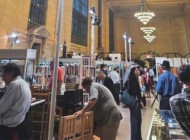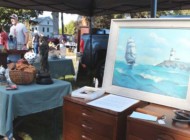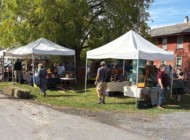-1024x768.jpg)
One of the more important pieces with Vee Kausel, Harwinton, Conn., was the Moravian armchair shown in the lower right corner of this photo. Kausel said it had original paint, great turnings and full height.
Review and Photos by Madelia Hickman Ring, Additional Photos by Rick Russack
CONCORD, N.H. – Peter Mavris’s Americana Celebration Antiques Show, a one-day show conducted in the Douglas Event Arena, is a perfectly sized show and a key component of New Hampshire Antiques Week. With just 55 dealers, six of which were new to the event, the show attracts a great variety of both dealers and buyers and is popular with both seasoned dealers and collectors as well as younger collectors. Scheduled early in the week, there was no sign of antiques fatigue, and both dealers and buyers alike were energetic and happy to be there.
After the show, Peter Mavris, who has been managing the show in its current configuration for three years, said, “It really went well. There were more than 350 early buyers – the parking lot was full. All together we had more than 800 people come through. Both of those numbers are well up from last year. We had 55 exhibitors, and several told me they had had a very good show. The Millerite banner that one of the new exhibitors – Thomas M. Rawson from Cedar Rapids, Iowa – had was one of the most talked about things in the show. He told me at the end of the day that he had at least one very interested buyer, and it may sell in the next few days. One of my favorite things, and it wasn’t very expensive, was a sled dog whip that had been owned by a well-known New Hampshire dog team racer. It came with a group of historical photos of the team, and the lot was sold and will wind up in a museum in New Hampshire. Several people commented on the quality of the merchandise. All in all, I couldn’t be more pleased. I’ve been asked about our monthly shows in Portsmouth. The building we used for years will be coming down, but we have a new location nearby, in Hampton, and the monthly shows will resume on October 7. We will run on the first Sunday of the month like we always have, and we will include the New Year’s Day show that a lot of people like.”
Unsurprisingly, many sales were made during early buying, which took place between 8 and 10 am, before the doors opened for general buying. With the show lasting only until 4 pm, buyers knew that if they didn’t buy, they would risk losing out, and sold tickets or gaps in displays could be seen almost immediately.
Near the entrance in the first row, Patricia Stauble, Wiscasset, Maine, had a fantastic hooked rug with the saying “What is Home Without a Mother”; a rare and early Concord coach sign dated 1824, for Mason M. Dow; and a wonderful pair of small Moses Eaton panels.
Dealers like to advertise works they will bring to shows in the hopes of making sales through the ads. One dealer who had sold their advertised piece was Mary Ross, Great Neck, N.Y., who had sold a Victorian bell-shaped Christmas candy box she had advertised. Highlights of her booth included a blond-toned Dutch wall shelf with wonderfully scalloped sides and shelves. In pointing out its attributes, Ross commented on both the shaped crest and skirt, suggesting the shelf could be hung upside down. Adjacent to the shelf was a spectacular late Nineteenth-early Twentieth Century folky sewing stand that she had acquired from a home on Long Island.
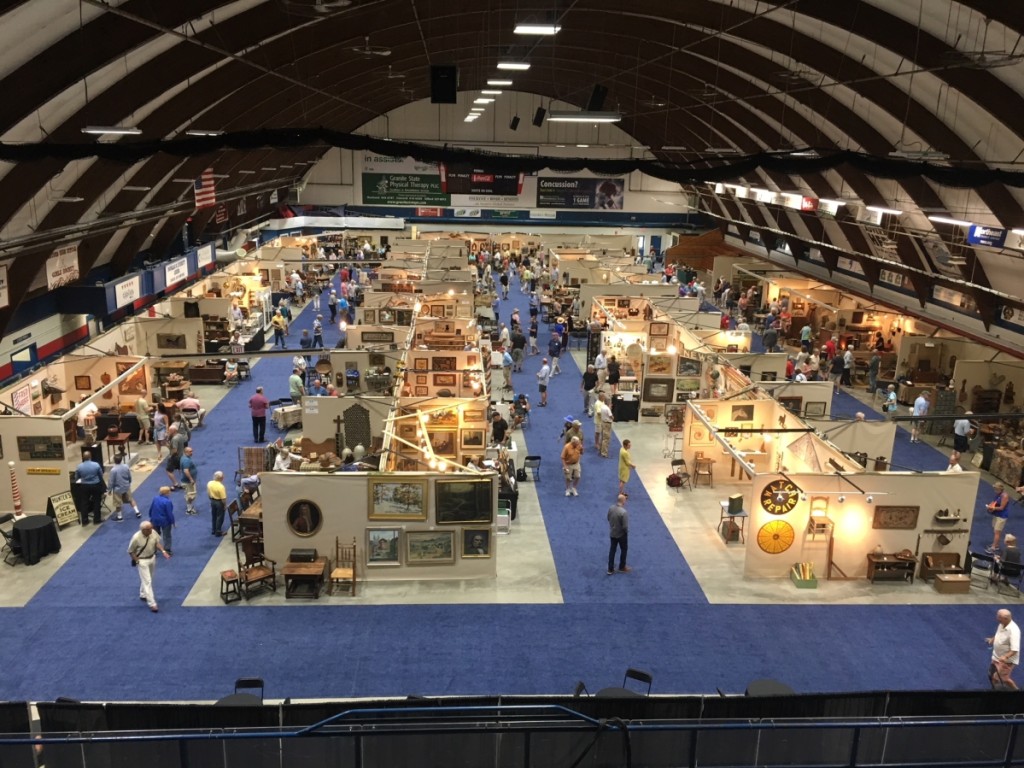
Spacious booths, wide aisles, air conditioning and a snack bar — Peter Mavris’s Americana Celebration show had everything necessary to spend a leisurely day antiquing.
Another dealer to have made a sale from a show advertisement – and one of the dealers exhibiting for the first time at the Americana Celebration show – was David Thompson, David Thompson Antiques & Fine Art, South Dennis, Mass., who had sold the Andrew Jackson carved cake board he had advertised. By mid-morning, Thompson had also sold a fire bucket and some carved and polychromed pull toys. He specializes in early photographs and had brought a good selection to choose from.
Vee Kausel, Harwinton, Conn., was enjoying the buyer traffic, though, at 11 am, she said she hadn’t had as many sales as in past years. She had brought fewer good smalls, opting for larger and more expensive pieces of furniture. One of these was a colorful Moravian armchair with bold turnings, full height and good “honest wear” to its original paint. Hanging over the armchair was a modest-sized landscape by Impressionist painter, Alfred Sisley, titled “Banks of the Loire.” The arrangement served to underscore how formal art and folk furniture can successfully coexist.
Larry Brown, H&L Antiques, Princeton, N.J., claimed several sales by the time early buying ended, including a hobby horse, Shaker boxes, stoneware and early lighting. When asked to point out particularly interesting or desirable lots, he pointed to a William and Mary chest of drawers, attributed to New England, and a red-painted Chippendale hanging cupboard that had been purchased at Christie’s in 1994, from the sale of the collection of Mr and Mrs George W. Scott Jr. The auction catalog was included with the cupboard.
Of prominent placement in the booth of Mike and Lucinda Seward, Pittsford, Vt., was an early Nineteenth Century Schoharie Valley blanket chest with stencil decoration and a date of 1730, which Mike Seward thought was later decoration, and possibly a memorial decoration. The Sewards were having a good show for smalls and wall “stuff.”
Doug Brown of Kezar Falls Curiosity Shop, Parsonsfield, Maine, specializes in military antiques, but he had a good variety to tempt other buyers. When asked if he had any unusual items, he immediately pointed out a World War II sailor-made folky radio with wooden sides, rope detailing and a front with a photograph of guns aboard ship 709. He’d acquired it from another dealer and was glad to have it. Occupying a plinth at the front of Brown’s booth was two months of the Portland Press Herald, dated March 1, 1947-April 30, 1947, which were bound together. The papers belonged to show director Peter Mavris, who was selling it through Brown’s booth.
Mavris’s show attracts dealers from throughout the United States. Coming from a greater distance was Thomas M. Rawson, Cedar Rapids, Iowa, who featured what was arguably one of the highlights of any booth: a large framed William Miller watercolor on cloth depicting prophesizing scenes from the Book of Revelations. Rawson had priced his at $60,000.
With the theme of the show being Americana, English and European works were few and far between. Robert Markowitz, Groveland, Mass., was pleased to point out a pair of “marmotinto” pictures, both attributed to Benjamin Zobel (Bavarian, 1762-1830), that he had found together and which he hoped he could keep together. Marmotinto is a term unfamiliar to this writer, who was happy to learn it is the technique for pictures made with colored sand or marble dust. Marmotinto pictures are not to be confused with pastel-on-sandpaper pictures, which Markowitz also had that allowed for a side-by-side comparison.
Many dealers bring a plethora of objects, which can often be overwhelming. This was not the case with South Road Art & Antiques, Stanfordville, N.Y., whose carefully curated booth felt pleasantly fresh and minimalist. This is perhaps not surprising, given that proprietor Susan Wechsler is a former artist, art critic, author and specialist in contemporary American ceramics, and has taught at Parsons’ New School for Design, and in the Cooper Hewitt masters program in the history of decorative arts and design. Among many of the standout lots Wechsler brought were a silhouette sheepdog and lamp weathervane, a zinc architectural pediment that she thought was one of several based on the markings on the back and an early Twentieth Century violin case trade sign.
-1024x664.jpg)
Among the favorites Bill Powell, Franklin, Tenn., brought to the show was this double-sided trade sign for shoemaker, Henry Delling. Powell pointed out the detail in the shoes as one of its best features.
Marion Atten, Hillwood Farms, Ill., and Beth Pulsipher, Schoolcraft, Mich., shared a booth, which featured a higher proportion of early American and English furniture than any other booth in the show. As the clock ticked towards noon, several red sold tags could be seen throughout the booth, a reassuring sign that there is still interest in “brown furniture.”
Matt Greig, Milton, Del., is one of the youngest dealers to exhibit at the Americana Celebration show. Among several eye-catching things in his booth were a set of 11 graduated green chestnut bottles, which he dated to circa 1810 and were priced at $4,200.
Marine and nautical works and objects are the specialty of Captain’s Quarters, Amherst, Mass., and the usual large and varied selection was on hand, including ship paintings, Nantucket baskets and scrimshaw.
Reflecting the changing times, formal furniture has been a slow seller and few dealers brought much, if any, of it. Morgan McWhinnie, South Hampton, N.Y., bucked the trend and had several lovely pieces, including a Chippendale serpentine chest of drawers, a Queen Anne drop leaf table and a Federal card table. He had sold the Chippendale chest that morning and hoped to move some more of it before the day was over. Other sales for McWhinnie included country smalls, a small Shaker rocker in size “0” and a child’s mushroom turned armchair.
The Cat Lady and Elizabeth Breish, both of Fort Washington, Penn., had several cat-themed objects, including a large papier mache cat head that they said was a “showstopper.” They were having luck selling their antique holiday ornaments and toys.
Rona Andrews’ booth, Wellesley, Mass., had an unusually large collection of wall-paper boxes, including several small examples, which are considerably rarer than the larger ones. One of the larger ones depicted Weslyan University of Middletown, Conn., the Palestine Garden pattern and the Port of Buffalo on Lake Erie on the lid.
The only dealer to bring just fine art was Art & Antiques Gallery, Worcester, Mass, whose booth was hung salon-style with a great variety of portraits, landscapes and still life pictures.
A few steps down the aisle was Perkins & Menson Antiques, Martha Perkins and Barrett Menson, Ashby, Mass., who specialize in frames. When asked where he gets his frames, he says he is known for buying entire collections.
Weathervanes with buildings are unusual. Keith and Diane Fryling, American Antiques & Folk Art, Green Lane, Penn., had an appealing early-to-mid Twentieth Century example that featured a lighthouse.
Peter Mavris works out of Cornish, Maine. For information on his other shows, 207-608-3086 or www.petermavrisantiqueshows.com.

.jpg)
.jpg)
.jpg)
.jpg)
.jpg)
.jpg)
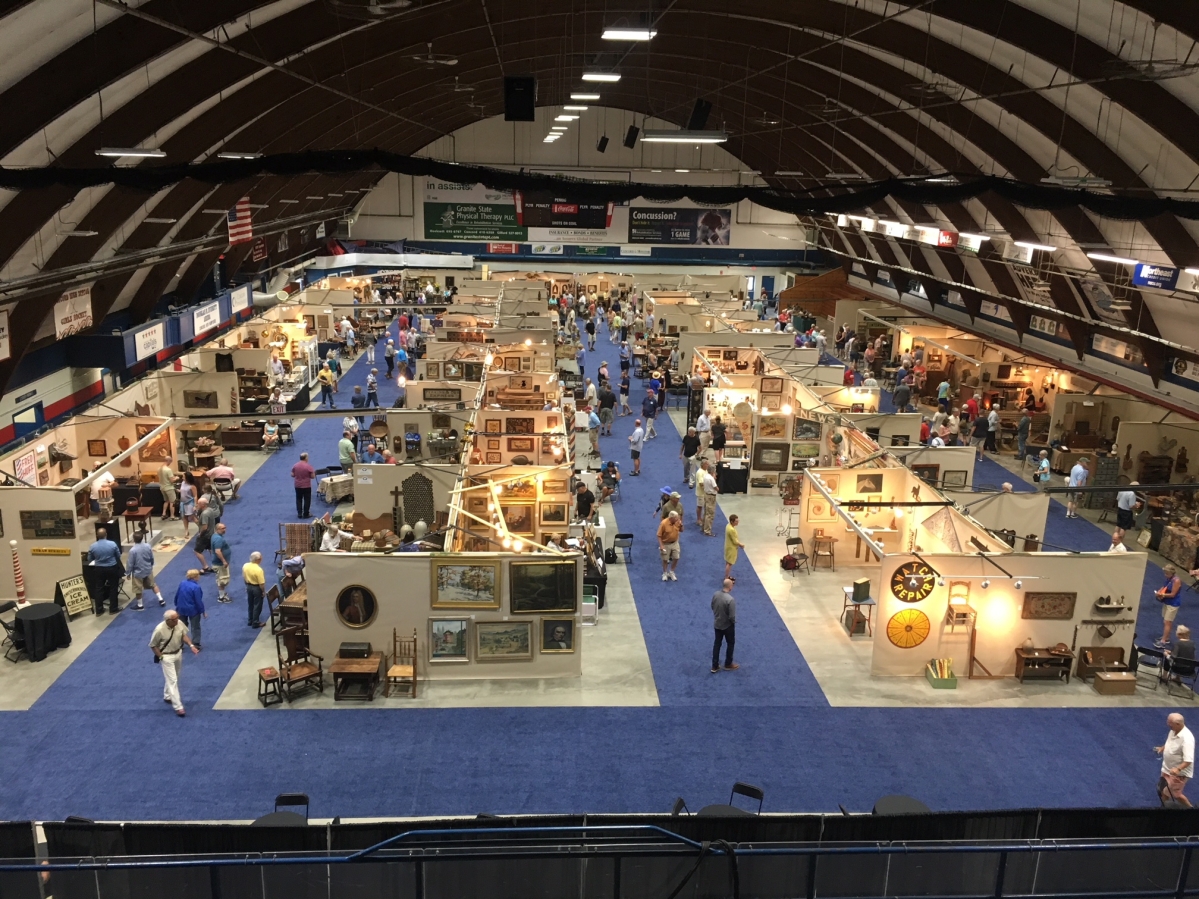
.jpg)
.jpg)
.jpg)
.jpg)
.jpg)
.jpg)
.jpg)
.jpg)
.jpg)
.jpg)
.jpg)
.jpg)
.jpg)
.jpg)

.jpg)
.jpg)
.jpg)
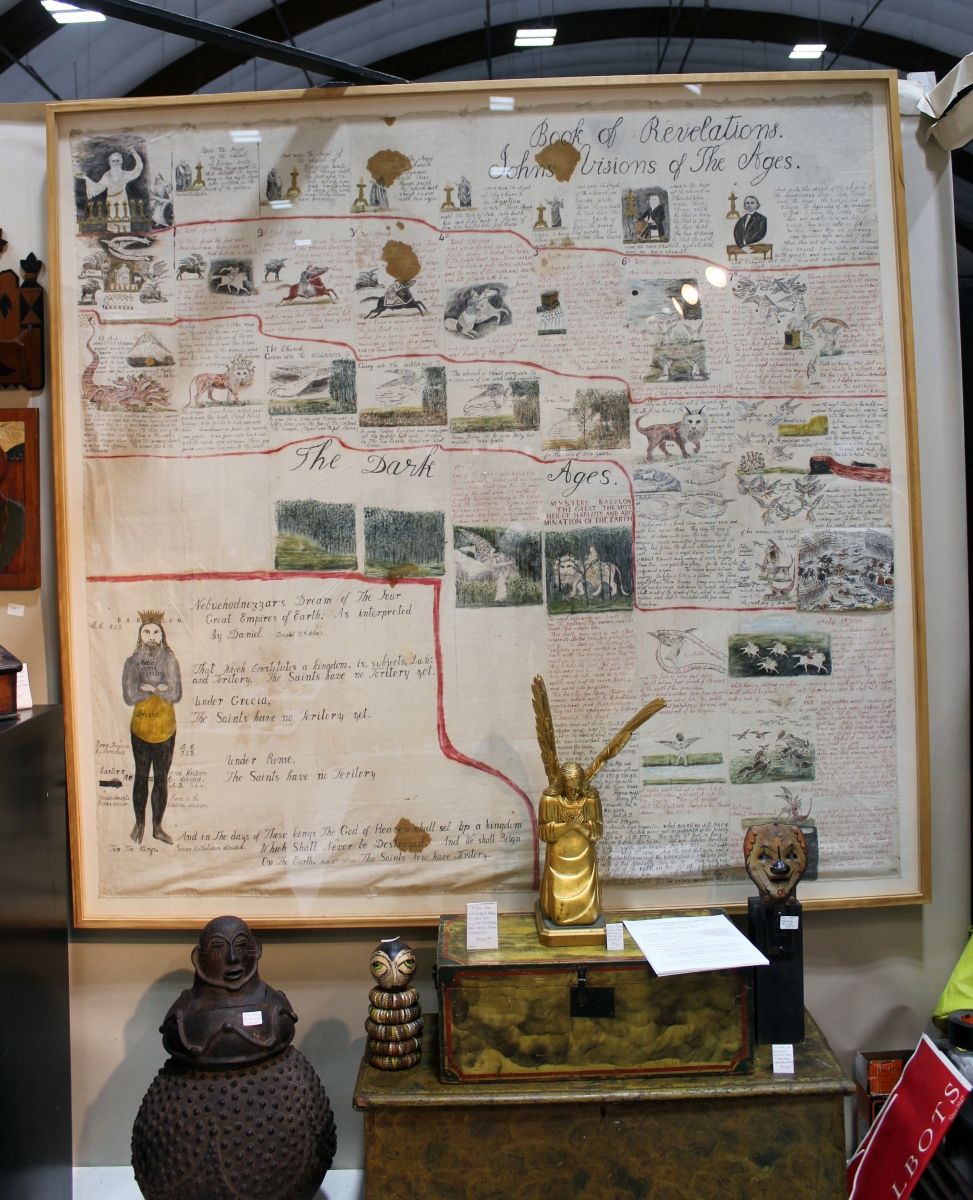
.jpg)
.jpg)
.jpg)
.jpg)
.jpg)
.jpg)
.jpg)
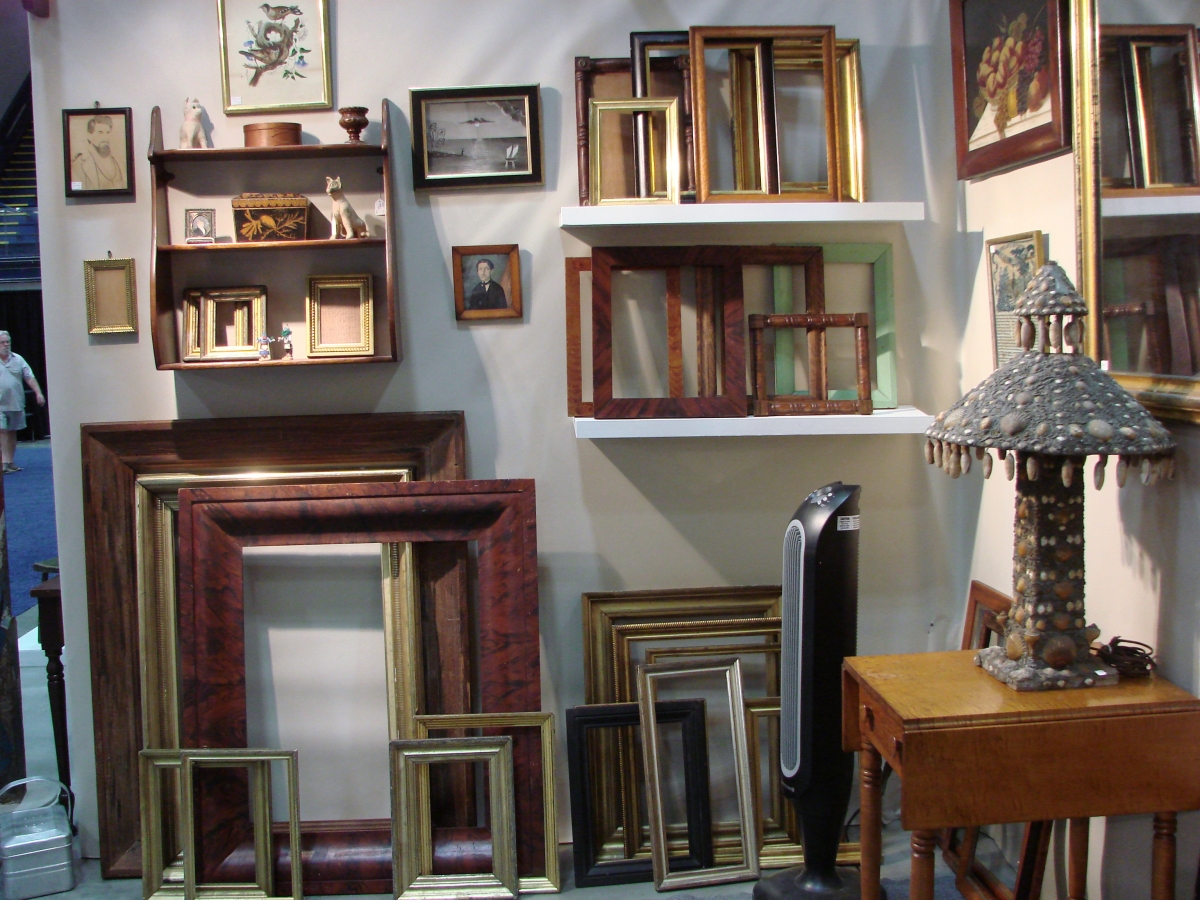
.jpg)
.jpg)
.jpg)
